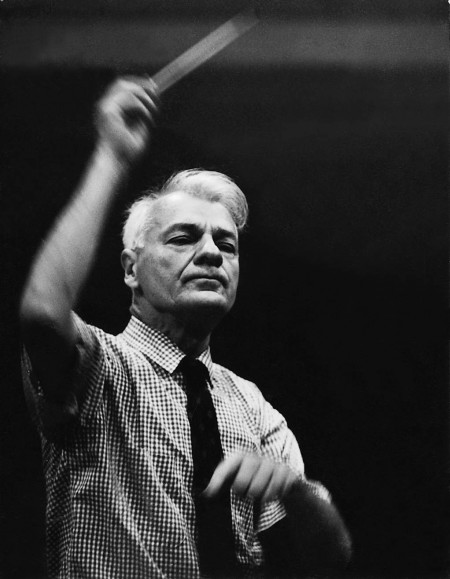
25 November 1901, Losonc - 8 October 1978, London
Tibor Serly was a student at the Academy of Music for only three academic years between 1921 and 1924. He spent his childhood in New York as his father Lajos Serly (a famous composer of songs and operettas in the last decades of the century) immigrated to America in 1905 with his family. Therefore Serly came to Budapest upon completing his studies abroad with a profound knowledge to study in the master school of Jenő Hubay and to attend the composition classes of Zoltán Kodály and Albert Siklós. The years he spent in Budapest resulted in a decisive turn in the development of his compositional ideas: not only his studies with Kodály but his familiarization with the works of Bartók had a strong impact on his juvenile pieces. Kodály wrote the following on him in his article titled Tizenhárom fiatal zeneszerző (Thirteen Young Composers): ‘...he was born here but grew up in America that was not conductive for his musical development: he got here with confused, formless and tuneless attempts some years ago. In his homeland he was purified, the love for melody prospered in him in the atmosphere of his home, and he has found his soul again.' Following his return to America in 1927 he was playing the violin and the viola for ten years in Cincinnati and then in the Philadelphia Symphony Orchestra and the NBC Symphonic Orchestra besides composing. Meanwhile his connections to Hungary were not interrupted, that is indicated by the premiere of his Viola Concerto in 1935 in Budapest by the Filharmóniai Társaság Zenekara (Orchestra of the Philharmonic Society). He lived in New York since 1937, and was dealing with teaching and composing primarily from that time.
Tibor Serly was one of the American friends of Béla Bartók. He made arrangements of some movements from the Mikrokozmosz for orchestra in 1943 with the agreement of Bartók. Following the death of Bartók – based on the instructions he received in the last days – Serly completed the orchestration of the last seventeen bars of the Third Piano Concerto, and then in 1950 he put together and elaborated the score of the Viola Concerto from the available sketches.
He made daring experimentations in his own compositions: his symphonic works, concertos, chamber music and solo pieces gained attention in America with special ideas in orchestration and sounding. Serly developed his own tone system in the second half of the 1940s, in which he divided the chromatic scale into two segments independent form each other. He named the ‘multi-modal, chromatic scale-system' according to his own words created this way as ‘modus lascivus', and used that in his works life-long. He summarized his experiences as a teacher and composer in his books (A Second Look at Harmony – 1945; Modus Lascious: the Road to Enharmonicism – 1976; The Rhetoric Book of Melody – 1978). He visited Hungary frequently from 1948 (he had his last composer's recital in Budapest in 1976), he conducted Bartók's and his own symphonic works, gave lectures on the details of the genesis of the Bartók works completed by him, and talked about his own compositional principles. His studio recital in the autumn of 1948 when he conducted the Orchestra of the Hungarian Radio at the Bartók Festival was notable. Tibor Sárai wrote the following among others in the journal Zenei Szemle on the concert: ‘The orchestra was conducted by Tibor Serly, who sided with Bartók in America helping the great Hungarian musician to be able to bear the sufferings of the immigration and the illness more and more overwhelming. However Serly sided with his great friend after Bartók's death serving the great oeuvre of Bartók. Therefore we are not able to judge his conducting form a critical viewpoint as we are touched so much.'
Sz. T.


